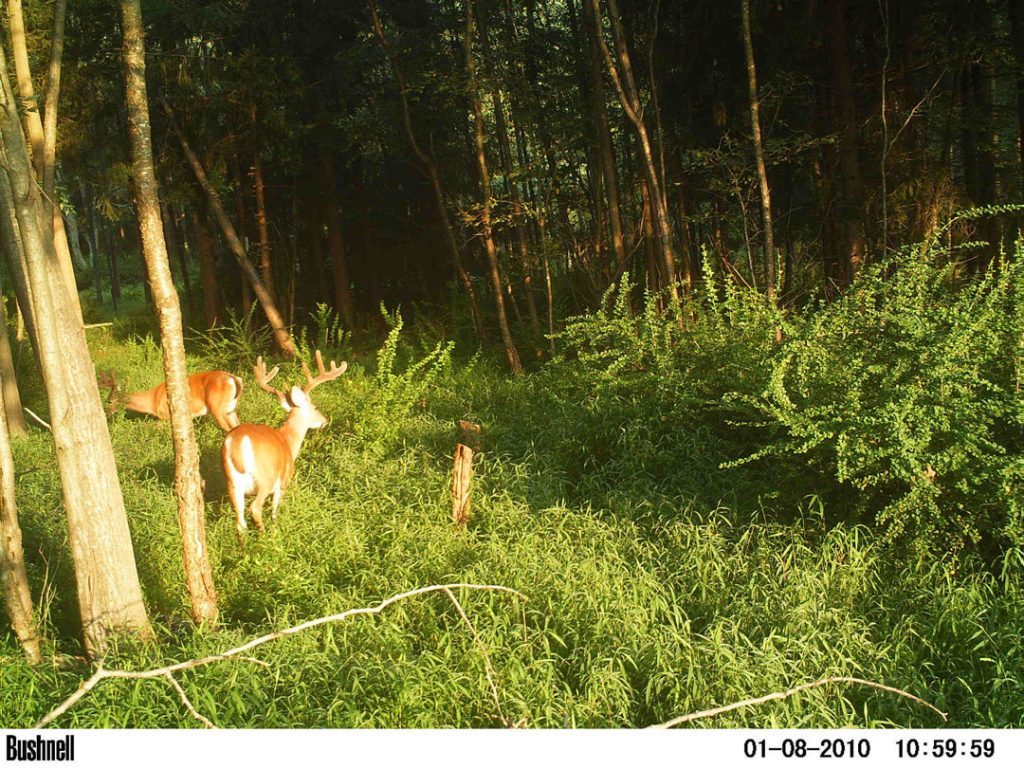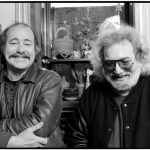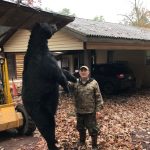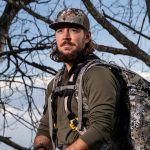Jeff Dutzer downed a 10-point buck near Hazleton on Nov. 30 after shooting the same deer twice before — with a camera.
His first photo showed off the buck with velvety antlers as it stood in a sun-splashed meadow with another deer.
Crosshairs converge on the deer in the second photo, which Dutzer took through a camera mounted on his rifle scope. Dutzer printed that photo as a still from a video that he recorded during bear season.
For hunters like Dutzer, trail cameras are pre-season scouts. Videos indicate the variety of wildlife in areas where hunters post their cameras, which also help scientists to record wildlife that they study and landowners to monitor property.
Around the nation, game cameras have solved crimes. The public tunes in online by watching feeds like those that the Pennsylvania Game Commission streams of elk and eagles.
Dutzer has long been a fan of the cameras.
“Since the day they came out, I thought they were the coolest technology,” he said.
He bought his first trail camera in 2009, although the batteries had short lives, and picture quality wasn’t great.
“A lot of false positives,” Dutzer recalled. “They took pictures of leaves.”
Nowadays he puts out 15 cameras on property that he hunts with lifelong friends.

SUBMITTED PHOTO
Jeff Dutzer caught this duck on camera before shooting it.
Dutzer grew up in West Hazleton and started hunting with them when he was 12.
“I always come back, even when I lived in Texas, to hunt with my friends, with this same group of people … every year, like a religion,” said Dutzer, who now lives near Bath, Northampton County and hunted with Ely Slusser when he took his deer this year.
The friends all take interest in the footage retrieved from the cameras.
“It’s like Christmas morning. Everybody gathers round the computer” to watch the wildlife. “Bobcat, bear, coyote, everything,” Dutzer said. “I must have 25 coyotes this month alone.”
When he saw the buck for the first time in velvet he realized that it had survived a few seasons to get that large.
“It was exciting,” said Dutzer, who remembers thinking, “I hope I get a chance.”
His next sighting came in bear season.
“I have video of him chasing doe. Incredible,” Dutzer said.
He made that video with Tactacam, one of a line of cameras that attach to guns, bows and fishing poles that he couldn’t resist when he saw one demonstrated in a store.
“What you look at through the scope it videos,” Dutzer said.
In the era before game cameras, hunters who spotted huge deer or bear might go on a quest, even for years, while trying to bring home a trophy. Instead of a computer printout, a mental picture propelled them into the woods.

SUBMITTED PHOTO
Jeff Dutzer saw this buck twice this year on cameras before he downed it during rifle season.
Dutzer said that happened to him once. While spotting deer in the evenings out of season, he and friends noticed a big deer two years in a row.
“The reason we knew it was the same buck was it had a distinctive limp because of an injury to its front, right shoulder,” he said of the buck, which he later shot. It had 12 points and remains his biggest to date.
This year, Dutzer shot the 10-pointer, which he had tracked on cameras, after taking part in another activity made possible by technology: a business call in a tree stand.
“I was on vacation. I had to take the call. I thought, I’ll take it right from the stand,” he said. Even with the windows closed, he thought his voice would drive away deer as the call went on for an hour.
When he hung up and looked out the windows, he saw does feeding.
Closer to sunset, the photogenic buck arrived along with another male.
He put his sight on the bigger buck, about 220 yards away, and fired.

Even after three decades as a reporter at the Standard-Speaker, Kent Jackson still enjoys meeting people, learning more about the community and sharing stories with readers. He currently covers schools but has reported on local government, health, police and the environment. Regularly, he writes about outdoor sports, wildlife and conservation for the Wildlife page on Sundays. Contact: 570-455-3636; kjackson@standardspeaker.com




